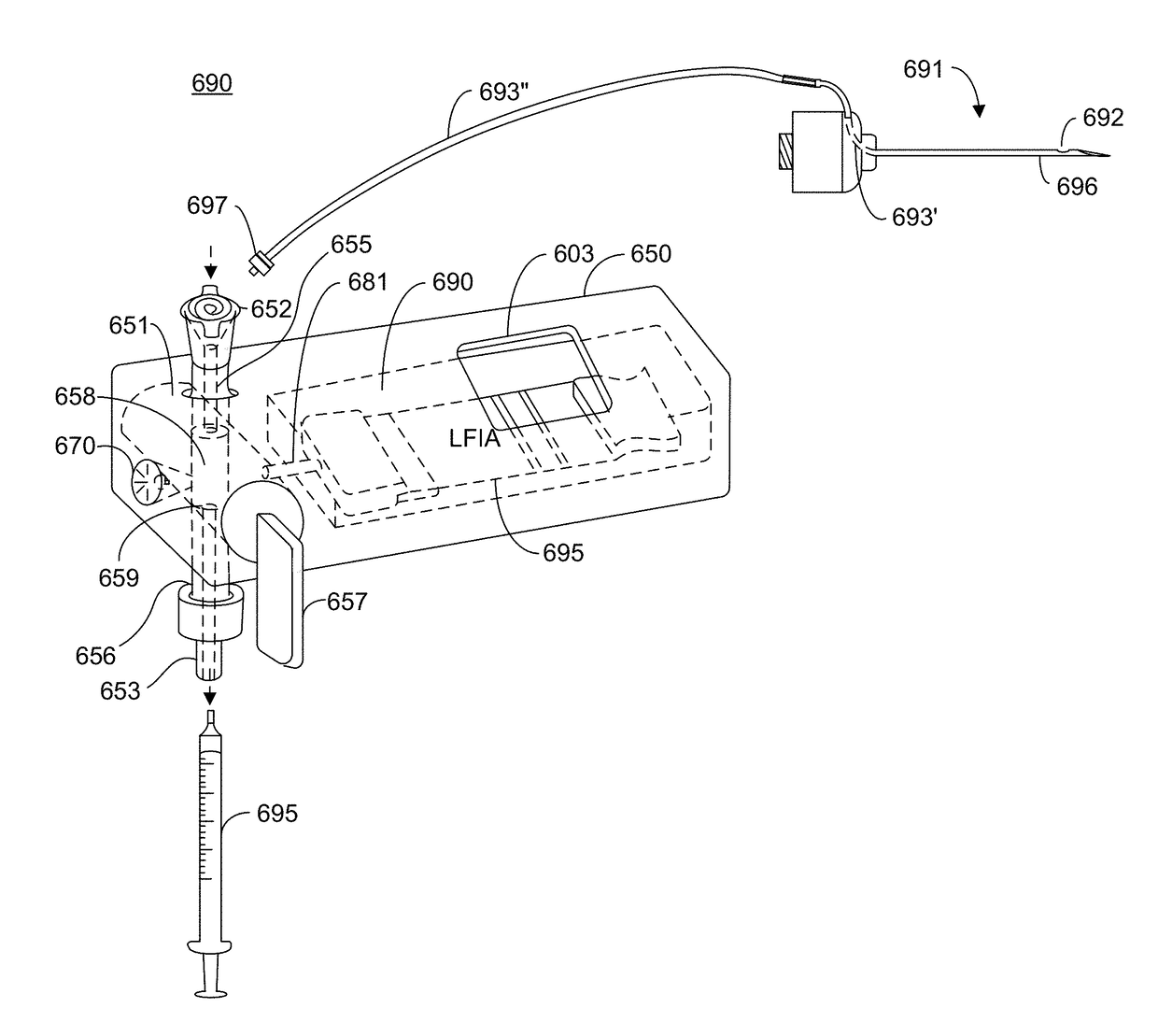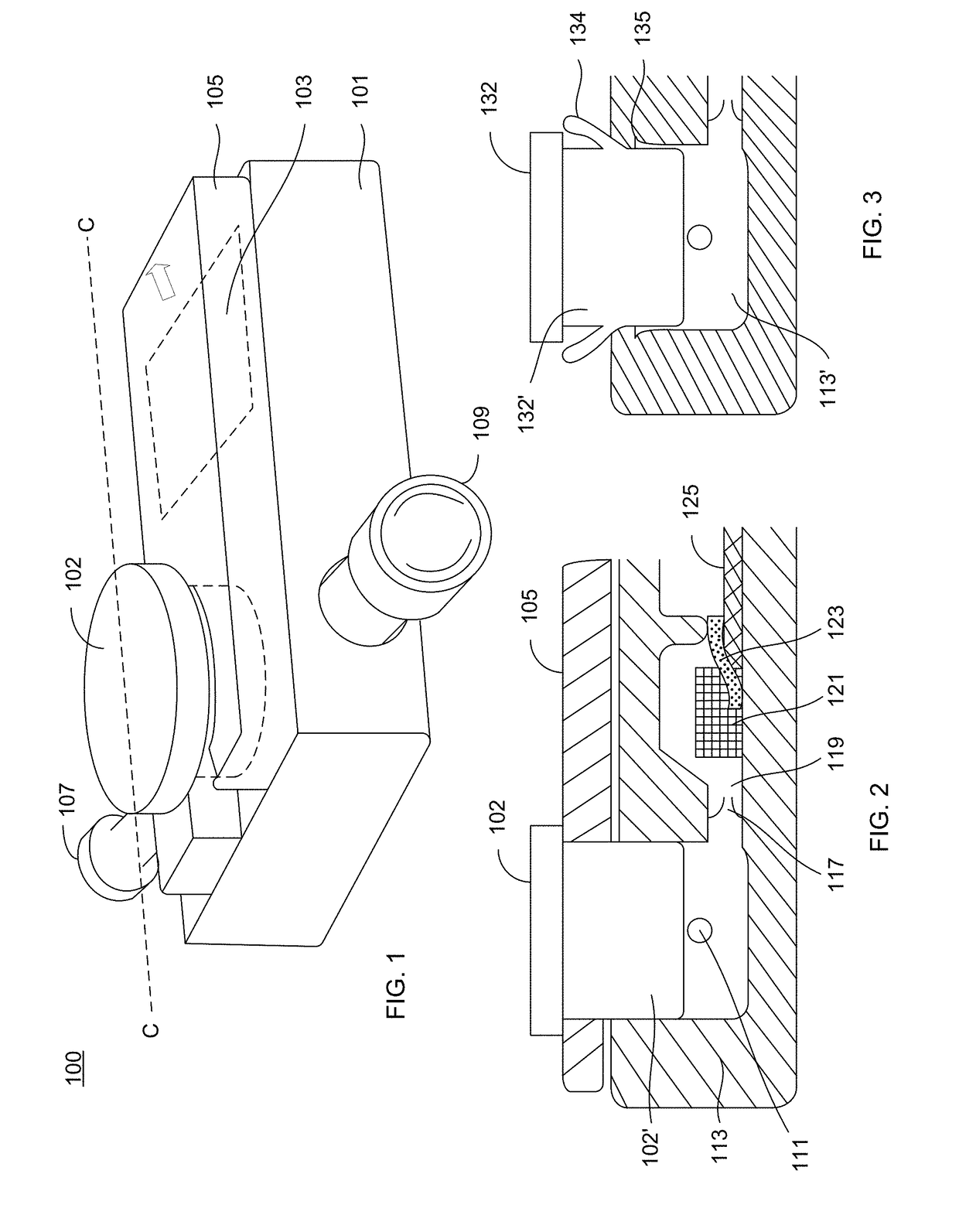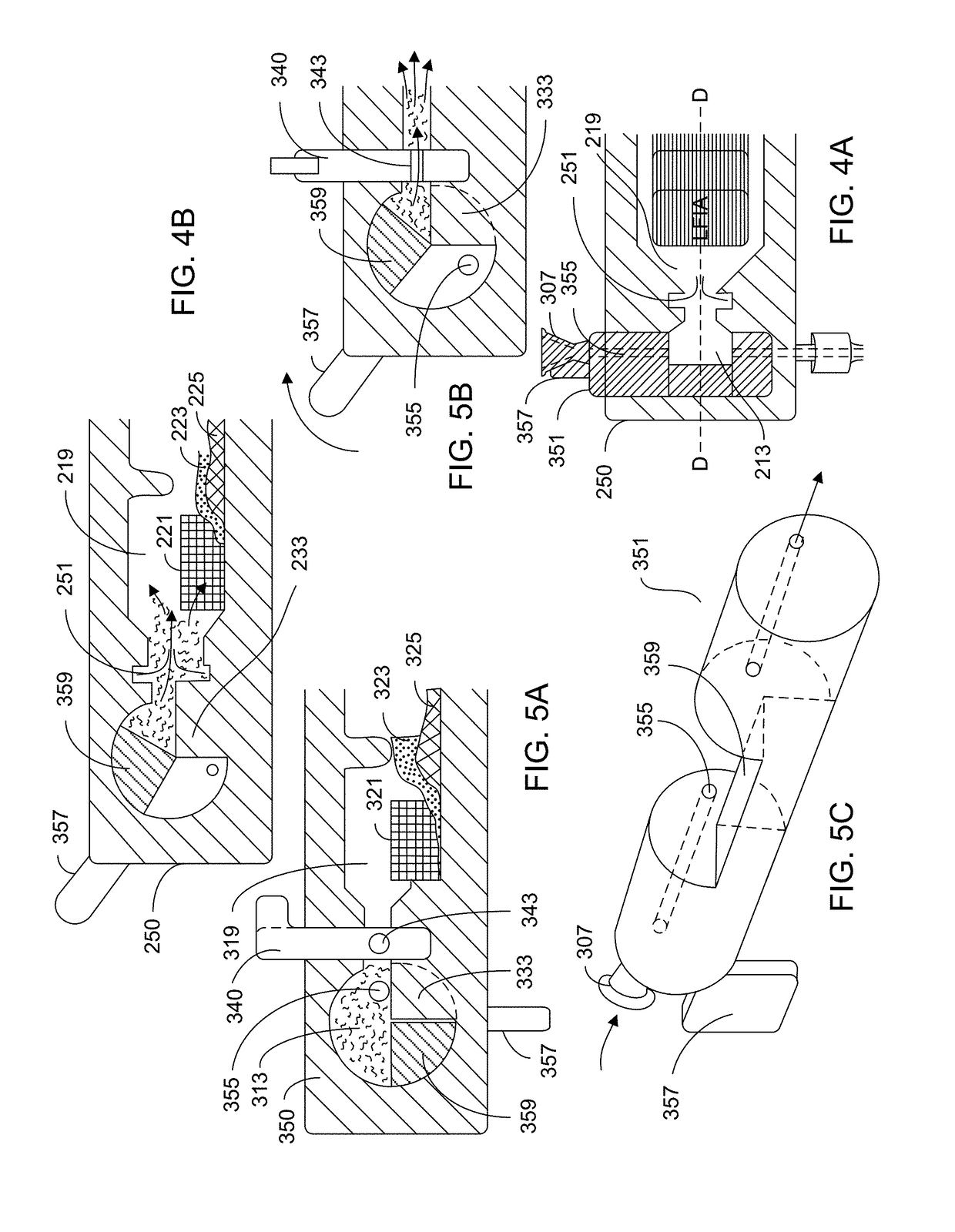Assay systems for point of care detection of ocular analytes
- Summary
- Abstract
- Description
- Claims
- Application Information
AI Technical Summary
Benefits of technology
Problems solved by technology
Method used
Image
Examples
example 1
low Immunoassay (LFIA), Antibody Capture
[0116]FIG. 7 shows a depiction of a typical LFIA arrangement. Sample is loaded onto a sample pad 29, which is in operable contact with a conjugate pad 31 that is loaded with conjugate antibody. A liquid, analyte-containing sample disposed on the sample pad traverses from the sample pad to the conjugate pad where the conjugate antibody binds to analyte in the sample. The analyte-containing sample (now with analyte / conjugate antibody complex) moves from the conjugate pad to the assay platform 33. The assay platform 33 typically includes at least one test region 35 having a test reagent immobilized thereon, the test reagent being specific to the analyte. As analyte-containing sample traverses across the assay platform, analyte of the analyte / conjugate antibody complex binds to the test reagent. The assay platform also includes a control region which has an antibody that is directed to conjugate antibody. This assists in determining whether the as...
example 2
low Immunoassay (LFIA), Aptamer Capture
[0127]Example 1 is repeated using aptamers in place of one or more of the antibody reagents.
example 3
on of Illustrated Embodiments
[0128]FIG. 1 shows a side perspective view of an analyte detection device 100 that receives a sample and determining the presence or amount of an analyte in the sample. The device 100 has an outer housing 101 and an inlet 107 into which a sample is delivered to the device as well as an outlet 109 to which an aspirator or other component can be connected. A sample acquisition device (such as 691 shown in FIG. 8 and described herein) can be connected to the inlet 107 and an aspirator (such as 695 shown in FIG. 8 and described herein) can be connected to 109 for purposes of delivering sample to the device 100. The device 100 includes a sample actuator 102 that serves to drive sample into internal components of the device 100. To prevent accidental actuation of the actuator 102, as well as movement of the actuator during the sample aspiration phase, a safety tab 105 overlays the top surface device but underneath a lip of the actuator 102. Shown underneath th...
PUM
 Login to View More
Login to View More Abstract
Description
Claims
Application Information
 Login to View More
Login to View More - R&D
- Intellectual Property
- Life Sciences
- Materials
- Tech Scout
- Unparalleled Data Quality
- Higher Quality Content
- 60% Fewer Hallucinations
Browse by: Latest US Patents, China's latest patents, Technical Efficacy Thesaurus, Application Domain, Technology Topic, Popular Technical Reports.
© 2025 PatSnap. All rights reserved.Legal|Privacy policy|Modern Slavery Act Transparency Statement|Sitemap|About US| Contact US: help@patsnap.com



